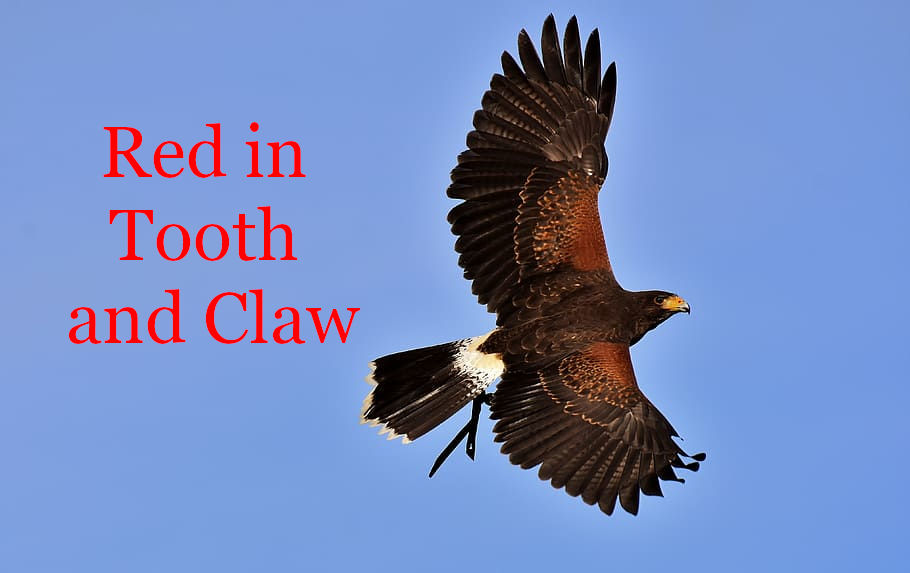Red in Tooth and Claw
- revgregorynbaker
- Jun 8, 2023
- 3 min read

Scripture: Job 39:30 – “Its young ones suck up blood, and where the slain are, there it is.” (NRSVue)
When I first moved into my house in 2006, seeing rabbits was a special treat. My wife even planted strawberries to help lure them into our yard because we liked to see them (and, of course, had no vegetables for them to steal). However, recently rabbits are more and more common in my neighborhood. It is getting to the point where they are almost as common as squirrels. Also, in recent years turkeys have gone from being unheard of to as common as Canada geese, which when I was growing up were also considered relatively rare. It seems like people are just more comfortable with having animals around, welcoming them as adorable neighbors and not pests or food. It feels like we are one big happy natural family.
I see this as a shift in our attitudes toward animals. When I was young, people treated animals as wild and dangerous. Now, they are lovable and cute. Let me give another example. When I was growing up, sloths were disgusting creatures with lifeless eyes and coarse hair that grew mold because of how slow the sloths were. Now, sloths are seen as laid-back creatures with goofy little smiles, with emojis and plushes. Part of this comes from nature documentaries. You know the kind. There is a depiction of a mother and her babies growing up. Then a predatory appears and the fear of the babies dying grips you. Of course, the baby almost always escapes. We are taught to personify the animals and minimize how cruel nature can be. Good always seems to triumph.
But pain and mortality are part of life. After losing his friend Arthur Hallam, Alfred, Lord Tennyson wrote (and rewrote) his famous poem In Memoriam, in which he tries to deal with questions of grief and loss. In a famous section, he contrasts the love of God with the cruelty of nature. “[Man] trusted God was love indeed / And love Creation’s final law— / Tho’ Nature, red in tooth and claw / With ravine, shriek’d against his creed—”. This idea spurs questions in us. How can we believe in a loving God and a loving universe when there is death and violence in the world around us? Why does God help some, but not others? Do we have to invent stories like nature documentarians do to make meaning of the world? If we were promised a loving world, is God unfair for not giving it to us?
Our relationship with animals, especially wild animals, can illustrate important truths about God. Let us look at the eagle. In the Book of Isaiah, the eagle is a symbol of hope and strength for the weary. “Those who wait for the Lord shall renew their strength; they shall mount up with wings like eagles.” But in the Book of Job, eagles are savage predators who opportunistically look for the weak so their young can drink their blood. The text does this in order to indicate how different God’s view of love and justice is from our own. For as Job complains to God about how he is being treated unfairly, God forces him to see the complexity, the horror, and indeed the love in the natural world. God provides for predator and prey and shows love for the meek and the mighty.
We sometimes lose track of this complexity in the world, wishing for an eagle-God to lift us from our worries. We want the world to be as cute and cuddly as the animals we see in online videos. Nature puts the lie to such simple wishes. And yet, when we see hopping bunnies and gobbling turkeys and dopey sloths, we recognize a kinship, and a sense that beyond the sadness and seeming meaninglessness of the world, there is a love that overcomes it all. Today, I hope you can sense that love whether you see pain or beauty.
Prayer: Lord, help me to see as you see and let me every know your love and presence. Amen.




Comments